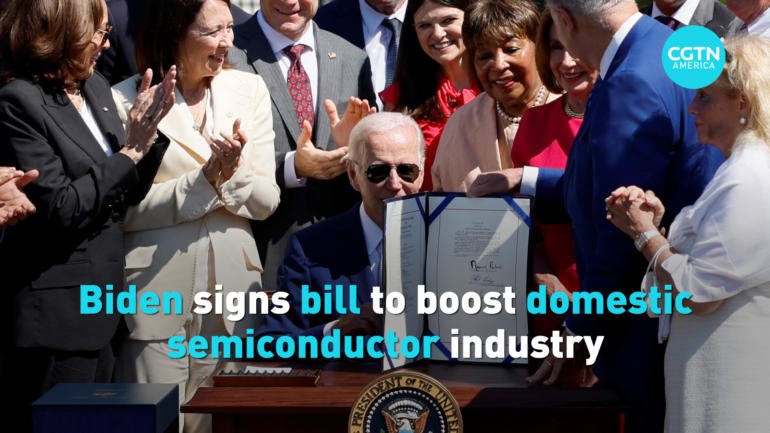U.S. President Joe Biden signed into law on Tuesday the CHIPS and Science Act of 2022, pumping more than $50 billion into research and manufacturing of semiconductor chips.
The law is aimed at reducing U.S. reliance on foreign suppliers for the production of the parts that drive almost all aspects of today’s technology from cars and computers to weapons systems.
“This bill I’m about to sign, the law, in my view represents what I’ve always believed,” Biden said during a sweltering Rose Garden signing ceremony. “America is the only nation in the world — and I believe this with every fiber of my being — the only nation in the world that can be defined … by a single word … possibilities.”
Biden also noted the United States produces less than 10% of the world’s semiconductors, a sharp decline over the previous 30 years as manufacturing has shifted abroad.
What motivated the White House to push for the expansion of domestic semiconductor manufacturing?
Due to a shortage of semiconductors brought on by the COVID-19 pandemic, U.S. supply chains have been hampered, which has increased prices and reduced the availability of some electronic products. At Tuesday’s White House event, Biden stated that shortages of semiconductors and automobiles were to blame for one-third of the previous year’s core inflation.
The bipartisan agreement to resurrect American innovation came in response to expanding Chinese technical dominance in the field. In order for the U.S. to meet the rising demand for digital items like laptops and smartphones around the world, semiconductor manufacturers like Intel are investing in new facilities.
U.S. officials worry that if the government does nothing, chip makers will keep moving new business to China, reducing the opportunity for the U.S. to make money from a sector it helped create decades ago.
How will the spending package be invested?
$52.7 billion for chip manufacturing and research
$39 billion over five years will be invested to boost domestic semiconductor manufacturing. It will give businesses incentives to develop and upgrade U.S. infrastructure and equipment.
$11 billion over five years will be given to the Department of Commerce to support worker training, new technology investments and advanced semiconductor manufacturing research and development.
$1.5 billion will go toward the Public Wireless Supply Chain Innovation Fund, which will aid telecom firms in competing with Huawei and limiting the reach of other firms with strong ties to China.
$170 billion for space exploration, innovation, and scientific research
$82.5 billion will go to the National Science Foundation and the Office of Science of the Department of Energy.
$13 billion will help fund scholarships and fellowships for STEM (science, technology, engineering, and math) education, with a focus on expanding access to STEM education in rural areas.
The legislation, which will lower the cost of automobiles, smartphones, consumer electronics, and appliances—all of which require chips— is viewed by the White House as a victory for the U.S. economy.
 CGTN America
CGTN America

